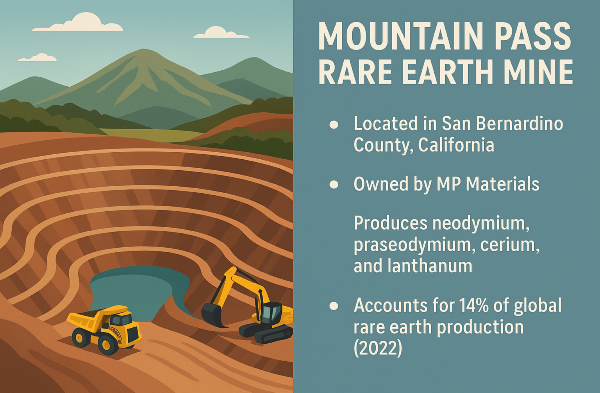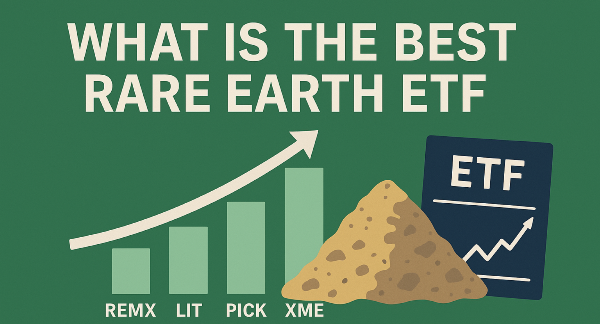Key Takeaways
To earn $500 a month in dividends, you'd typically need around $150,000 to $200,000 invested in dividend stocks yielding 3–4% annually. The exact amount depends on your portfolio’s average yield—higher yields require less capital but may carry more risk.
Introduction
Dividend income offers a compelling way to generate passive cash flow, providing financial stability and long-term wealth accumulation. By investing in dividend-paying stocks, individuals can receive regular payouts without having to sell assets, making it an attractive strategy for those seeking financial independence. However, setting realistic goals is essential—earning $500 per month in dividends requires careful planning and an understanding of how dividend yields impact total returns. For instance, at a 5% dividend yield, an investor would need approximately $120,000 in capital to achieve this goal. Lower yields demand a larger investment, while higher yields may carry added risk. By selecting reliable dividend stocks, reinvesting earnings, and diversifying a portfolio, investors can work toward sustainable passive income that aligns with their financial objectives.
Understanding Dividend Yields
What is Dividend Yield?
Dividend yield is a crucial metric for investors seeking passive income through dividend-paying stocks. It represents the percentage return an investor earns from dividends relative to the stock price. Calculated using the formula Dividend Yield = (Annual Dividend per Share / Share Price) x 100, this measure helps determine the income potential of a stock. A higher dividend yield generally means a greater return on investment, but it can also signal higher risk, particularly if the yield is unusually inflated due to a declining stock price. Understanding how yields fluctuate based on market conditions and company performance is essential for identifying sustainable sources of dividend income.
Average Dividend Yields
On average, dividend yields vary depending on the type of stocks and market conditions. Stable blue-chip companies often offer yields ranging between 2% and 4%, providing reliable income with lower volatility. High-yield stocks, such as those in sectors like utilities and real estate investment trusts (REITs), may exceed 5% to 7%, but they can carry increased risk due to potential dividend cuts or unstable financials. Popular dividend-paying stocks, like Johnson & Johnson (JNJ), Procter & Gamble (PG), and Coca-Cola (KO), have historically maintained steady payouts with moderate yields. Investors should balance yield considerations with overall portfolio stability to achieve long-term financial growth.
Calculating the Required Investment
Basic Calculation
Determining the investment required to generate $500 per month in dividends largely depends on the dividend yield of chosen stocks. The basic calculation involves dividing the annual income goal—$6,000 ($500 × 12 months)—by the expected yield percentage. For instance, at a 4% dividend yield, an investor would need $150,000 in capital, while a 5% yield reduces the requirement to $120,000. A higher 6% yield further lowers the necessary investment to $100,000, but it often comes with greater risk, as high-yield stocks can be more volatile or subject to dividend cuts. Balancing yield and stability ensures a sustainable long-term income stream.
Other Considerations
Beyond yield calculations, several other factors influence dividend income sustainability. Reinvesting dividends can accelerate portfolio growth through compounding, allowing dividends to generate additional returns over time. Investors should also consider tax implications, as qualified dividends are taxed differently than ordinary income. Furthermore, diversification across industries helps mitigate risks, ensuring that income isn't overly reliant on a single sector’s performance. By integrating these strategies, investors can build a reliable and resilient dividend portfolio that supports financial independence.
Best Dividend Stocks for Reliable Income
High-Yield vs. Growth Stocks
When choosing dividend stocks for reliable income, investors must weigh the trade-offs between high-yield and dividend growth stocks. High-yield dividend stocks offer immediate, substantial payouts but may carry higher risks, such as dividend cuts or stock price volatility. In contrast, dividend growth stocks often provide lower initial yields but increase payouts over time, resulting in compounded long-term gains. Safe, high-yield dividend stocks include utility companies, REITs, and consumer staples, such as Verizon (VZ), Realty Income (O), and Procter & Gamble (PG). These companies have a history of steady dividend payments and financial stability, making them solid choices for passive income.
ETFs and Dividend Funds
Dividend ETFs and funds provide a convenient way to gain diversified exposure to high-quality dividend-paying companies without managing individual stocks. These funds distribute dividends to investors and typically focus on stocks with strong financials and consistent payouts. Popular dividend ETFs include Vanguard High Dividend Yield ETF (VYM) and Schwab U.S. Dividend Equity ETF (SCHD), both known for their track records of stable income generation. By investing in ETFs, individuals can reduce risk while securing reliable dividend income, making them an excellent choice for long-term passive investing.
Strategies to Build a Dividend Portfolio
Dividend Growth Strategy
A dividend growth strategy focuses on investing in companies with a consistent history of increasing their dividend payouts over time. These stocks, often found in sectors like consumer staples, healthcare, and technology, provide long-term wealth accumulation through compounding dividend increases. Companies such as Johnson & Johnson (JNJ) and Microsoft (MSFT) have demonstrated strong financial health, supporting steady dividend growth. This approach is ideal for investors who prioritize stability and sustainable income, as rising dividends signal strong earnings, making these stocks valuable for long-term financial independence.
High-Yield Strategy
A high-yield strategy, on the other hand, aims to maximize immediate returns by focusing on stocks with above-average dividend yields. Sectors like real estate investment trusts (REITs), utilities, and energy often feature stocks with yields of 5% or higher, such as Realty Income (O) and AT&T (T). While high-yield stocks provide greater passive income upfront, they also carry higher risks, including dividend cuts and stock price volatility. Investors using this strategy must balance yield and stability, carefully selecting companies with strong cash flows and reliable earnings to minimize exposure to financial downturns.
Passive vs. Active Management
The choice between passive vs. active management depends on how involved an investor wants to be in their portfolio. A passive approach, using dividend ETFs like Vanguard High Dividend Yield (VYM) or Schwab U.S. Dividend Equity ETF (SCHD), allows for hands-off investing, offering diversification and stable income. In contrast, an active management strategy requires monitoring individual stocks, adjusting holdings based on company performance and dividend trends. Active investors can capitalize on undervalued stocks or reinvest dividends strategically, optimizing returns. Whether passive or active, the key to building a strong dividend portfolio is aligning investment choices with financial goals and risk tolerance.
Conclusion
Achieving $500 per month in dividend income requires careful planning and strategic investing. Depending on the dividend yield, investors may need anywhere from $100,000 (at 6% yield) to $150,000 (at 4% yield) in capital to reach this goal. To ensure long-term success, it’s crucial to diversify holdings, reinvest dividends for compounded growth, and prioritize financially stable companies with consistent dividend payouts. Additionally, understanding tax implications and maintaining a balanced mix of high-yield and dividend growth stocks can help mitigate risks while sustaining passive income. Ultimately, every investor should tailor their portfolio to match their financial goals and risk tolerance, ensuring a steady and reliable dividend stream that aligns with their long-term wealth-building strategy.
🚀 Your Ultimate Guide to Dividend Investing! 💰
Want to build reliable passive income? Looking to live off dividends? Start here with the top dividend insights:
🏆 Top Dividend Stock Picks
💰 Passive Income & Dividend Investing Strategies
🔍 How Much to Invest for BIG Dividend Income
⚡ Dividend Taxes & Smart Selling Strategies
🔗 Bookmark this guide & start building your dividend wealth today! 🚀💸




























Key Takeaways
To earn $500 a month in dividends, you'd typically need around $150,000 to $200,000 invested in dividend stocks yielding 3–4% annually. The exact amount depends on your portfolio’s average yield—higher yields require less capital but may carry more risk.
Introduction
Dividend income offers a compelling way to generate passive cash flow, providing financial stability and long-term wealth accumulation. By investing in dividend-paying stocks, individuals can receive regular payouts without having to sell assets, making it an attractive strategy for those seeking financial independence. However, setting realistic goals is essential—earning $500 per month in dividends requires careful planning and an understanding of how dividend yields impact total returns. For instance, at a 5% dividend yield, an investor would need approximately $120,000 in capital to achieve this goal. Lower yields demand a larger investment, while higher yields may carry added risk. By selecting reliable dividend stocks, reinvesting earnings, and diversifying a portfolio, investors can work toward sustainable passive income that aligns with their financial objectives.
Understanding Dividend Yields
What is Dividend Yield?
Dividend yield is a crucial metric for investors seeking passive income through dividend-paying stocks. It represents the percentage return an investor earns from dividends relative to the stock price. Calculated using the formula Dividend Yield = (Annual Dividend per Share / Share Price) x 100, this measure helps determine the income potential of a stock. A higher dividend yield generally means a greater return on investment, but it can also signal higher risk, particularly if the yield is unusually inflated due to a declining stock price. Understanding how yields fluctuate based on market conditions and company performance is essential for identifying sustainable sources of dividend income.
Average Dividend Yields
On average, dividend yields vary depending on the type of stocks and market conditions. Stable blue-chip companies often offer yields ranging between 2% and 4%, providing reliable income with lower volatility. High-yield stocks, such as those in sectors like utilities and real estate investment trusts (REITs), may exceed 5% to 7%, but they can carry increased risk due to potential dividend cuts or unstable financials. Popular dividend-paying stocks, like Johnson & Johnson (JNJ), Procter & Gamble (PG), and Coca-Cola (KO), have historically maintained steady payouts with moderate yields. Investors should balance yield considerations with overall portfolio stability to achieve long-term financial growth.
Calculating the Required Investment
Basic Calculation
Determining the investment required to generate $500 per month in dividends largely depends on the dividend yield of chosen stocks. The basic calculation involves dividing the annual income goal—$6,000 ($500 × 12 months)—by the expected yield percentage. For instance, at a 4% dividend yield, an investor would need $150,000 in capital, while a 5% yield reduces the requirement to $120,000. A higher 6% yield further lowers the necessary investment to $100,000, but it often comes with greater risk, as high-yield stocks can be more volatile or subject to dividend cuts. Balancing yield and stability ensures a sustainable long-term income stream.
Other Considerations
Beyond yield calculations, several other factors influence dividend income sustainability. Reinvesting dividends can accelerate portfolio growth through compounding, allowing dividends to generate additional returns over time. Investors should also consider tax implications, as qualified dividends are taxed differently than ordinary income. Furthermore, diversification across industries helps mitigate risks, ensuring that income isn't overly reliant on a single sector’s performance. By integrating these strategies, investors can build a reliable and resilient dividend portfolio that supports financial independence.
Best Dividend Stocks for Reliable Income
High-Yield vs. Growth Stocks
When choosing dividend stocks for reliable income, investors must weigh the trade-offs between high-yield and dividend growth stocks. High-yield dividend stocks offer immediate, substantial payouts but may carry higher risks, such as dividend cuts or stock price volatility. In contrast, dividend growth stocks often provide lower initial yields but increase payouts over time, resulting in compounded long-term gains. Safe, high-yield dividend stocks include utility companies, REITs, and consumer staples, such as Verizon (VZ), Realty Income (O), and Procter & Gamble (PG). These companies have a history of steady dividend payments and financial stability, making them solid choices for passive income.
ETFs and Dividend Funds
Dividend ETFs and funds provide a convenient way to gain diversified exposure to high-quality dividend-paying companies without managing individual stocks. These funds distribute dividends to investors and typically focus on stocks with strong financials and consistent payouts. Popular dividend ETFs include Vanguard High Dividend Yield ETF (VYM) and Schwab U.S. Dividend Equity ETF (SCHD), both known for their track records of stable income generation. By investing in ETFs, individuals can reduce risk while securing reliable dividend income, making them an excellent choice for long-term passive investing.
Strategies to Build a Dividend Portfolio
Dividend Growth Strategy
A dividend growth strategy focuses on investing in companies with a consistent history of increasing their dividend payouts over time. These stocks, often found in sectors like consumer staples, healthcare, and technology, provide long-term wealth accumulation through compounding dividend increases. Companies such as Johnson & Johnson (JNJ) and Microsoft (MSFT) have demonstrated strong financial health, supporting steady dividend growth. This approach is ideal for investors who prioritize stability and sustainable income, as rising dividends signal strong earnings, making these stocks valuable for long-term financial independence.
High-Yield Strategy
A high-yield strategy, on the other hand, aims to maximize immediate returns by focusing on stocks with above-average dividend yields. Sectors like real estate investment trusts (REITs), utilities, and energy often feature stocks with yields of 5% or higher, such as Realty Income (O) and AT&T (T). While high-yield stocks provide greater passive income upfront, they also carry higher risks, including dividend cuts and stock price volatility. Investors using this strategy must balance yield and stability, carefully selecting companies with strong cash flows and reliable earnings to minimize exposure to financial downturns.
Passive vs. Active Management
The choice between passive vs. active management depends on how involved an investor wants to be in their portfolio. A passive approach, using dividend ETFs like Vanguard High Dividend Yield (VYM) or Schwab U.S. Dividend Equity ETF (SCHD), allows for hands-off investing, offering diversification and stable income. In contrast, an active management strategy requires monitoring individual stocks, adjusting holdings based on company performance and dividend trends. Active investors can capitalize on undervalued stocks or reinvest dividends strategically, optimizing returns. Whether passive or active, the key to building a strong dividend portfolio is aligning investment choices with financial goals and risk tolerance.
Conclusion
Achieving $500 per month in dividend income requires careful planning and strategic investing. Depending on the dividend yield, investors may need anywhere from $100,000 (at 6% yield) to $150,000 (at 4% yield) in capital to reach this goal. To ensure long-term success, it’s crucial to diversify holdings, reinvest dividends for compounded growth, and prioritize financially stable companies with consistent dividend payouts. Additionally, understanding tax implications and maintaining a balanced mix of high-yield and dividend growth stocks can help mitigate risks while sustaining passive income. Ultimately, every investor should tailor their portfolio to match their financial goals and risk tolerance, ensuring a steady and reliable dividend stream that aligns with their long-term wealth-building strategy.
🚀 Your Ultimate Guide to Dividend Investing! 💰
Want to build reliable passive income? Looking to live off dividends? Start here with the top dividend insights:
🏆 Top Dividend Stock Picks
💰 Passive Income & Dividend Investing Strategies
🔍 How Much to Invest for BIG Dividend Income
⚡ Dividend Taxes & Smart Selling Strategies
🔗 Bookmark this guide & start building your dividend wealth today! 🚀💸